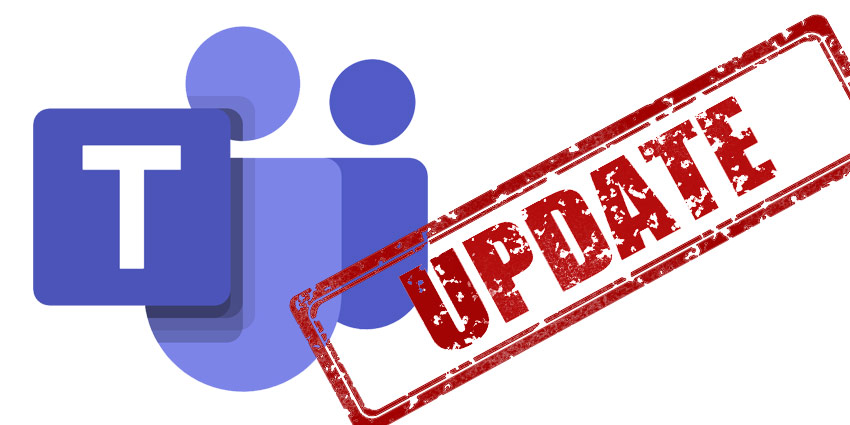Since February 2020, things as we knew it, have never been quite the same. That’s around the time most of the world went into lockdown to combat the spread of the novel Coronavirus. This forced massive shifts in every way, shape, and form imaginable for businesses, especially for those that found themselves without a contingency plan. From the early months of 2020, it was clear, business resiliency and continuity would enter the mainstream vernacular. And the enterprises that had plans in place, as well as organizations that already enabled hybrid or full-time work from home options – likely stayed afloat.
Other categories of businesses include those that refused to get with the program and folded due to the pressures of refusing to migrate critical collaboration and other workplace communications to the cloud for purposes such as scale, ease-of-use, deployment, and self-service options – the list goes on. Nicole Herskowitz, Microsoft Teams, General Manager, said:
“During the response to the pandemic, many organizations leveraged group meetings first, this is evident by Microsoft Teams reaching 200 million participants in a single day during the pandemic”
Microsoft’s spent time preparing for scale, which requires both structure and admin control, to achieve a proper user experience. “We’re excited to announce a new Advanced Communications set of capabilities to support scaling Teams up to 20,000 participants.” The collaboration giant said, when building this capability, it focused on the meeting experience, adding in a statement, “We wanted to make sure that even as the meeting scales it is still easy to manage and listen to the speakers.” As such, they’ve limited the size of interactive meetings participants to 1,000 participants, telling me there’s “A seamless shift to a ‘view only’ mode after the limit’s met.”

Enhanced admin control, another new and helpful feature out by Microsoft Teams. The feature could add more structure to your meetings, enabling the company’s branding on meetings. In the coming months, you can even brand your meeting lobby. At a later date, users can extend their branding to the core meeting experience,” I’m told. You’ll also be able to integrate popular with business apps to manage (at scale) and automate formerly-manual workflows. If you have an Advanced Communications plan for Microsoft Teams, you can add to any Microsoft 365 or Office 365 paid subscription, an offering now available. There’s even a free 60-day trial via the Teams Admin Center or on the Microsoft Teams website in mid-August.
Microsoft introduced a fresh new device called Microsoft Teams displays, a dedicated Teams end-point with an ambient touch screen, high-quality calling, and video, along with a hands-free Cortana experience. Harnessing the power of built-in Cortana, the Lenovo ThinkSmart View and Yealink will deliver Microsoft’s first-ever Teams displays in the US, later this year, a spokesperson for Microsoft shared. The collaboration giant too announced extended support for Skype for Business (3PIP) phones beyond 2023, so those won’t retire in July 2021. “Users can continue to use existing Skype for Business phones as they move to Teams.” Microsoft Teams will soon support core calling features on SIP phones from Cisco, Yealink, Polycom, and others via Teams. SIP support’s set for availability during the first half of 2021.
There’s even a new line of Microsoft Teams phones with physical buttons, high-quality audio, and core calling features. AudioCodes, Poly, and Yealink, will introduce devices starting early in 2021. The company’s portfolio now includes new USB peripherals with dial pads and a Microsoft Teams user interface. The USB phones work out-of-the-box, feature a Teams button, and can connect with both PCs and Macs, resulting in a high-quality Teams audio experience. “These will be available in late 2020, the first of which will get shipped with Yealink,” Microsoft said in a statement.
Microsoft updated its whiteboard feature in Teams, adding sticky notes, text, and improved performance. So many new features on the Teams platform, it can feel overwhelming, but there are many great resources out there to help you get started. You can check out our Microsoft Teams 101 guide to get started with the free service, that has a lot of premium features for users to take advantage of. Microsoft’s making news for reversing the decision to give away 120 domestic calling minutes, likely facing backlash from those who sell the Teams solutions along with all its premium features such as calling time. The company did release Yammer on Android, iOS, and Windows devices, and said it would charge for call recording, as well as contact center APIs.
A few weeks ago, at Microsoft Inspire, the collaboration company added a host of new features for front-line workers, including a walkie-talkie. Microsoft announced new device management and monitoring options for Microsoft Teams Rooms to deliver high-quality calling and meeting experiences. Microsoft also unveiled Microsoft Teams Rooms Standard, which gave users access to many new features via the Teams Admin Center. The features make it easier to deploy and manage a fleet of devices, Microsoft told me back in July. There were improvements across device set-up, bulk management tasks, and health monitoring, made, too. Teams users can manage Microsoft Teams Room devices from the Admin Center, as well as all other ‘Teams’ devices including collaboration bars, IP phones, etc., from the Teams platform.
Microsoft Teams Rooms Premium is another offering introduced by the collaboration giant, which fosters remote management and lets customers shift the operational responsibility of managing and monitoring Microsoft Teams Rooms to Microsoft. The delivery model gives users access to ‘intelligent software,’ dedicated experts, and advanced data insights. A recent report by Twilio suggests tech companies have experienced years worth of digital transformation in a matter of months and in some cases, months. Microsoft is undoubtedly a part of that wave of tech companies transforming features based on the new normal. The novel Coronavirus is likely to bring forth more changes to the way we conduct business, meetings, collaborate, and even land new clients – and the collaboration market is sure to see its share of (ROI) return on investment.
What other new innovations will COVID-19 force collaboration companies to make to their various platforms to keep customers satisfied? Leave us your comments in the ‘comments’ section down below.







